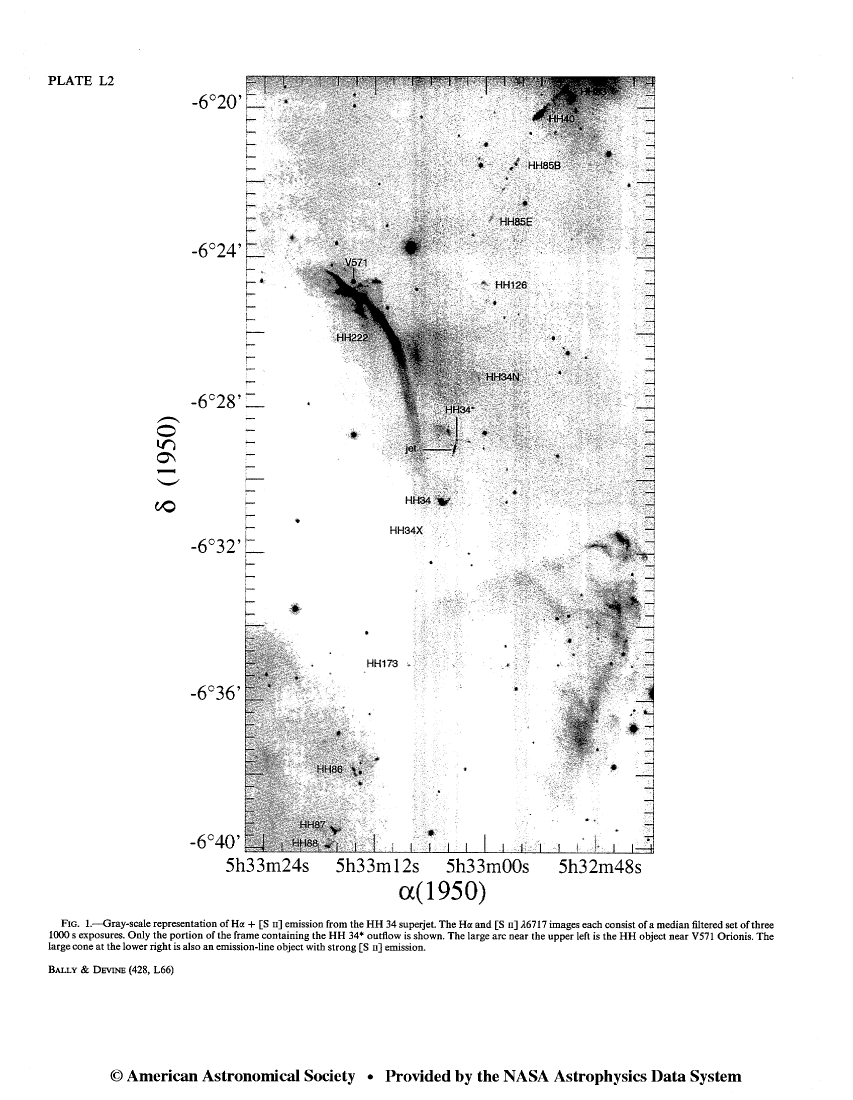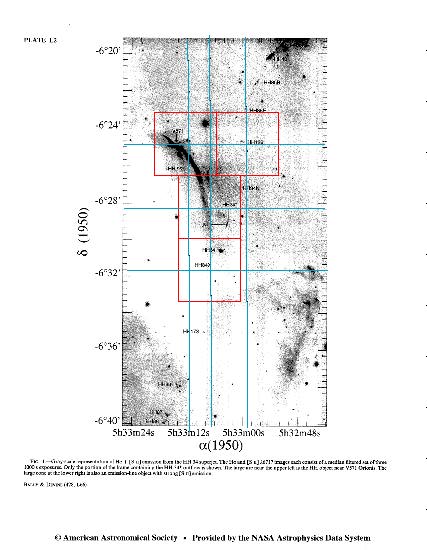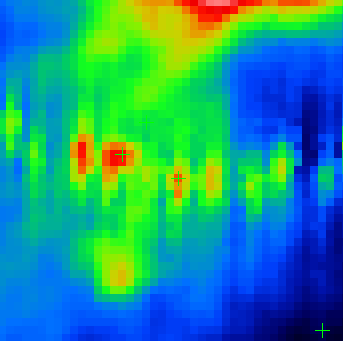 (click to enlarge)
(click to enlarge)Goal is to make an ISO polarization map that is comparable in size to
Figure
1 in Bally
& Devine, Ap.J. (Lett.) 428, L65, shown here: (click to enlarge)
(click to enlarge)
A suggested set of four pointings, with positions marked by crosshairs
(note 1950 RA,Dec axes) are shown in this figure: (click to enlarge)
(click to enlarge)
This information was contributed and complied by Alyssa Goodman.
IRAS 100-micron Map and estimated fluxes:

Fluxes and positions at crosses (numbers 1-4 increase left to right; see notes below ):
1. RA = 83.460621 DEC = -6.393144 brightness = 461.9 MJY/SR band = 100 RA = 5h33m50.54904s DEC = -6d23m35.3184s (B1950)
2. RA = 83.384539 DEC = -6.294221 brightness = 180.1 MJY/SR band = 100 RA = 5h33m32.28936s DEC = -6d17m39.1956s (B1950
3. HH34 RA = 83.286225 DEC = -6.468873 brightness = 395.2 MJY/SR band = 100 RA = 5h33m08.69400s DEC = -6d28m07.9428s (B1950)
4. RA = 82.839578 DEC = -6.944422 brightness = 47.29 MJY/SR band = 100 RA = 5h31m21.49872s DEC = -6d56m39.9192s (B1950)
Notes:
On position #1:, from Darren Dowell: If you're interested, the first, brightest, source in your HH 34 region list goes by at least two names: IRAS 05338-0624 and L1641N. There is a compact (sub)millimeter source there at 05h33m52.7s, -06d24'02". We measured the polarization of that source at 350 microns and got P=0.53+-0.36%, PA = 91 +- 20. At 1.3 mm, Jason Glenn measured 4.2+-0.9%, 93+-7. I don'tknow what to expect, or even what the source looks like, at shorter wavelengths.
click here to return to main ISOPHOT polarimetry planning page